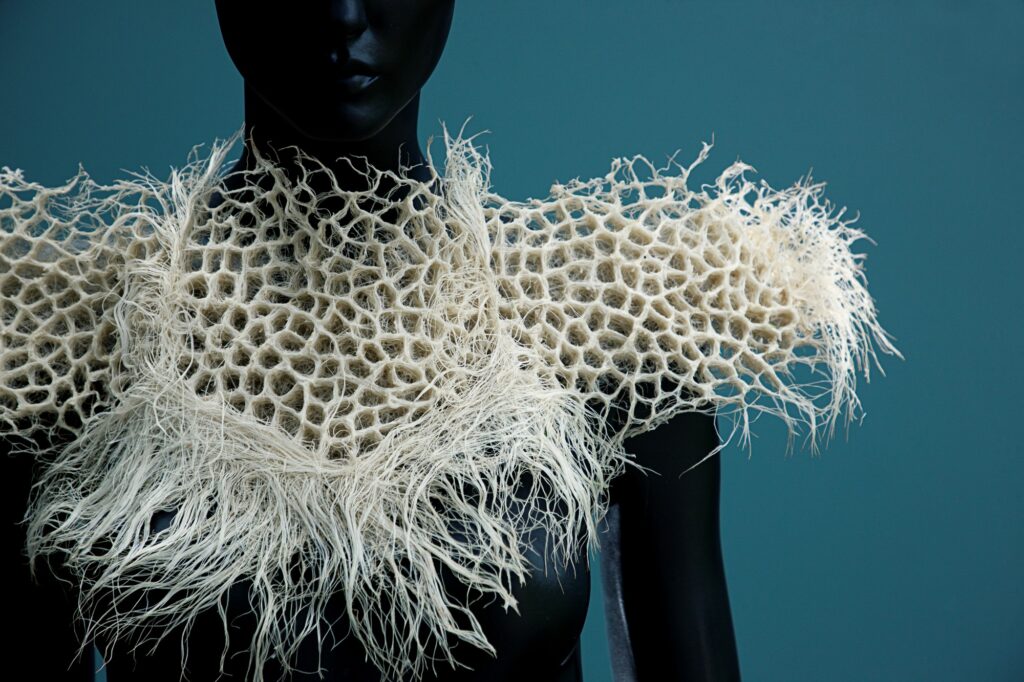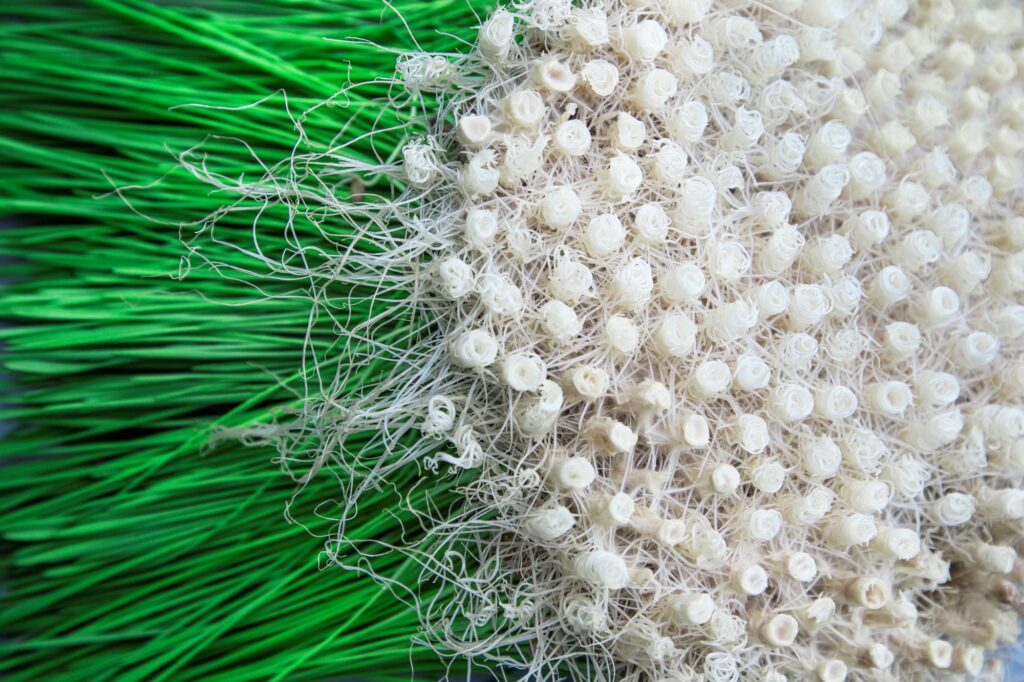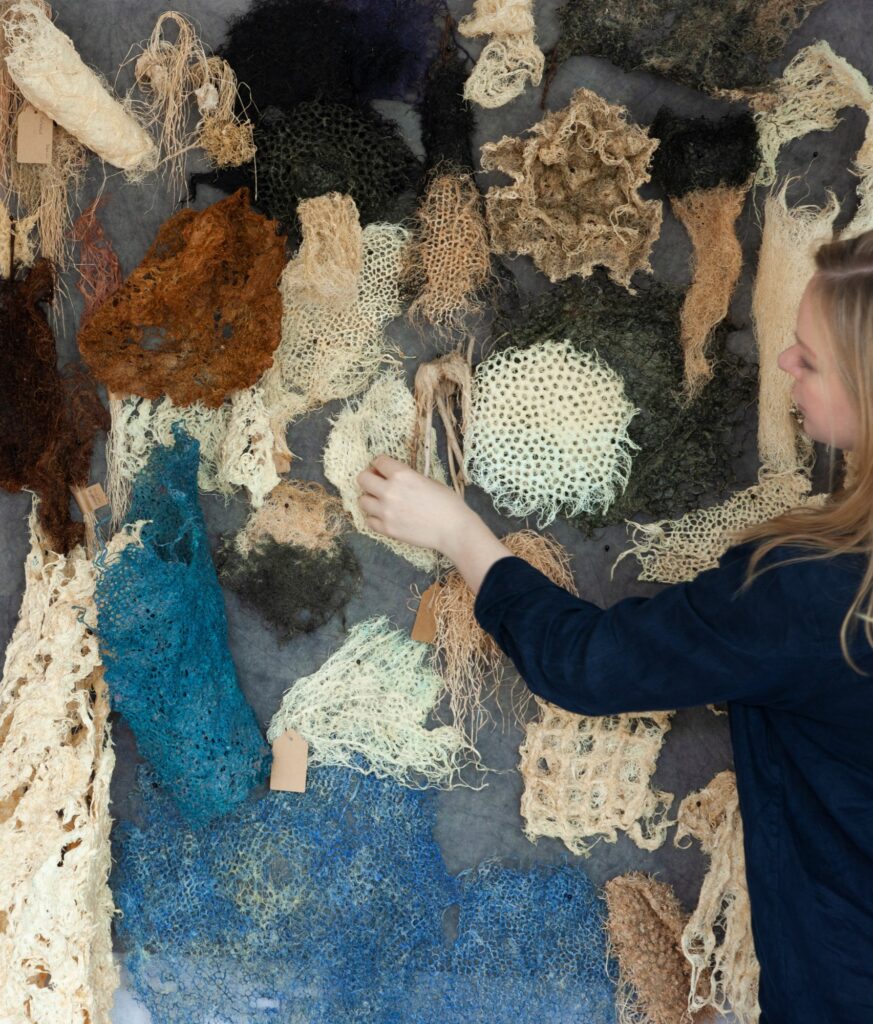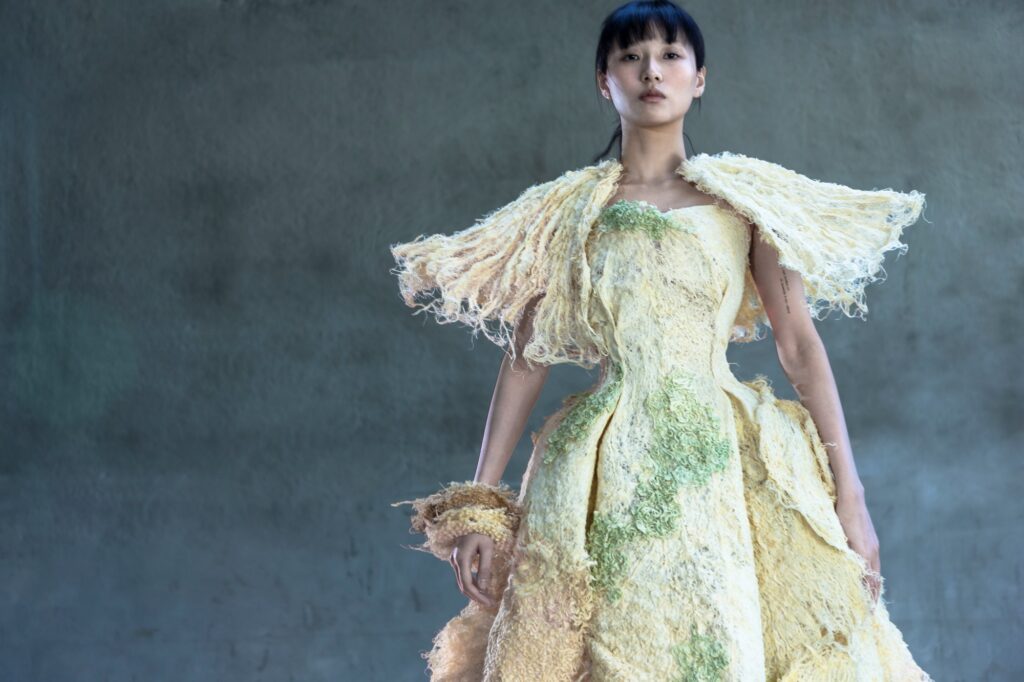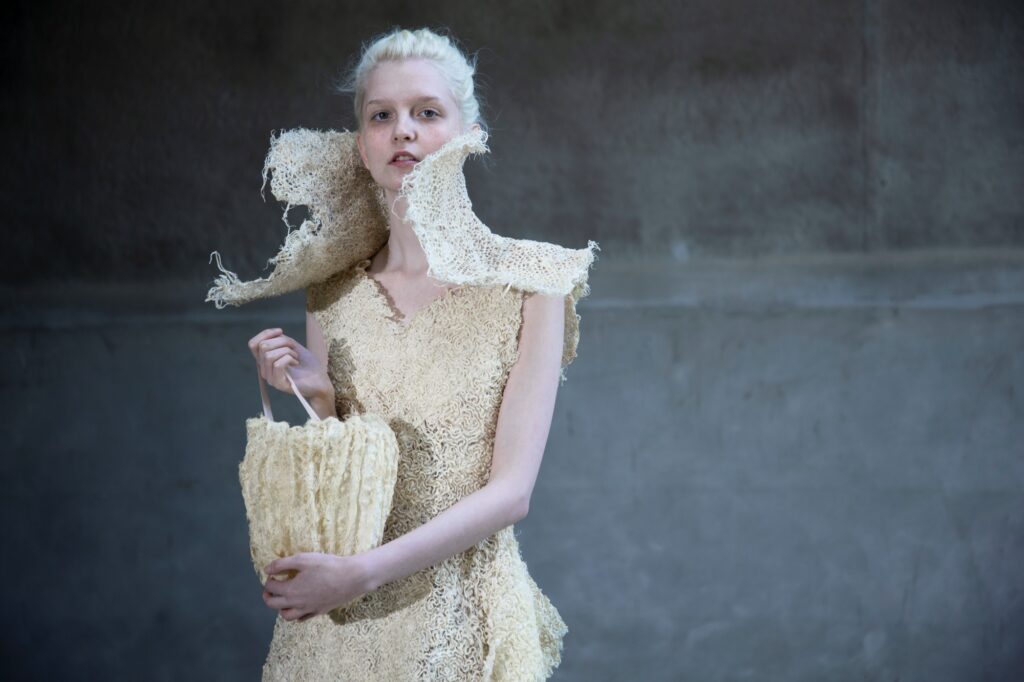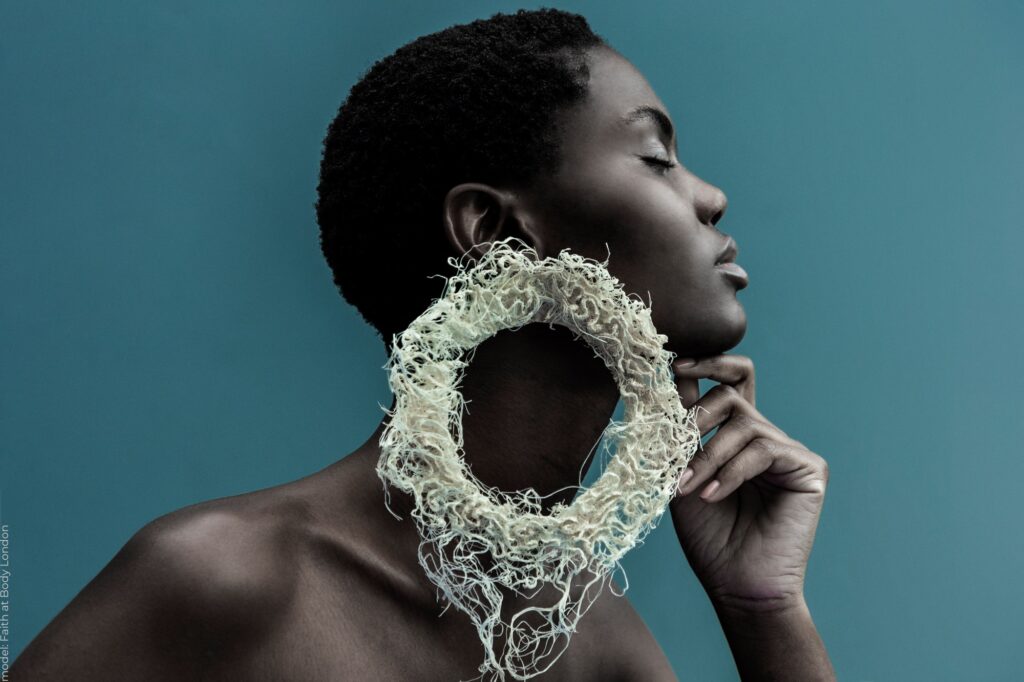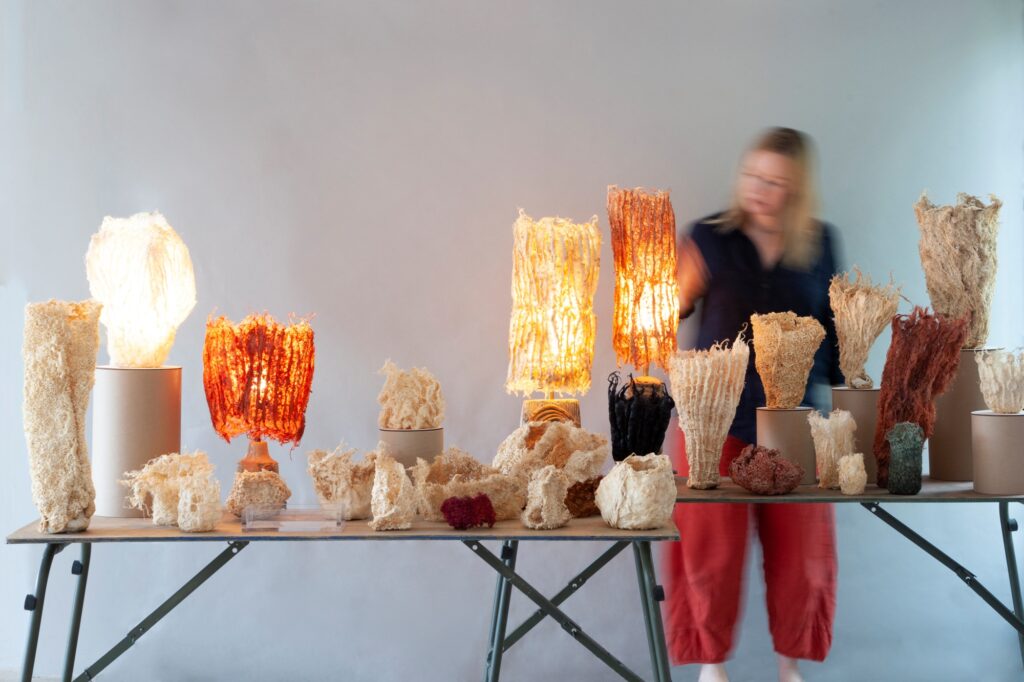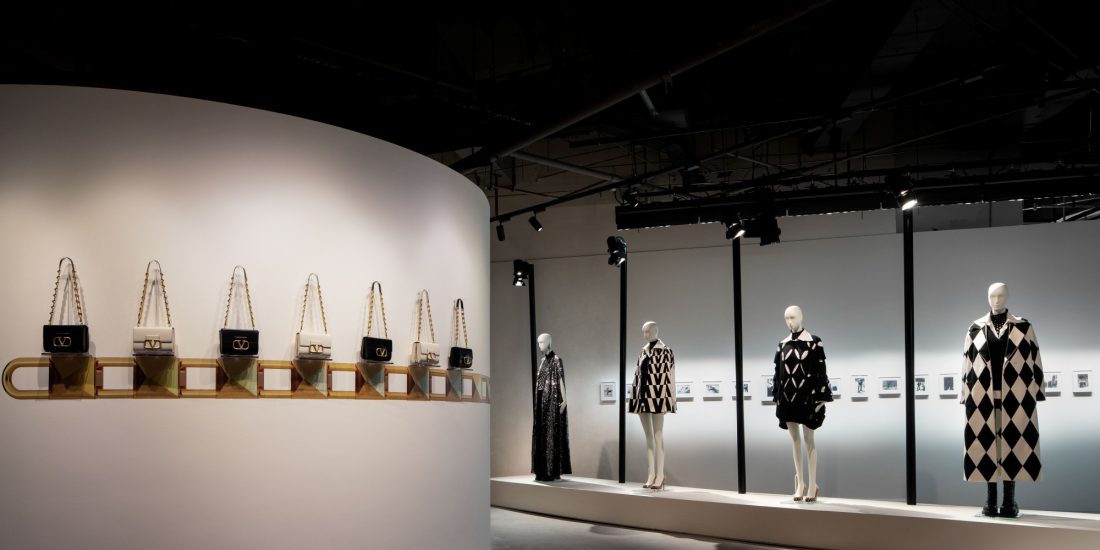Growing Fashion, Literally.
Winner of the Green Product Award, Fashion Category 2022, Zena Holloway explores the question, ‘What if we could grow our clothes from seeds?’ By Naomi Mathew
Fashion is known for its staggering impact on our environment. Today, the average lifetime of clothes has reduced drastically as they are evaluated against the evolving ‘current’ style and trend parameters every other month. Fast fashion often utilises cheap and synthetic fibres which when discarded, sends harmful microplastics into the oceans. As the world grapples with the intense consequences of our actions and material choices, designers are exploring new methods and materials to approach fashion sustainably and ethically. One such mind-blowing example is Zena Holloway’s collection of garments and objects grown from grass roots, aptly titled ‘Rootfull’.
“The fashion industry produces 10% of humanity’s carbon emissions and creates a huge amount of pollution in the process of making textiles,” explains Holloway. “By contrast this project explores the promising possibility of root grown textiles and imagines compostable and sustainable fashion. As fashions change, new clothes grow, and old clothes are composted. Grown from root, inspired by marine life.”
Zena Holloway is a commercial diver, PADI instructor, and British photographer specialised in capturing moments within water. Her career as an underwater photographer has made her acutely aware of the depth of the problems caused by plastics in oceans. Having witnessed various heart-breaking, guilt-inducing scenes underwater, she began her search for solutions in material science and bio-design. It was when she spotted bright red willow roots sticking out from the side of the riverbank during a film shoot that she got the idea to use grassroots that now form the basis of her wearable work.
Rootfull is her pioneering initiative that explores the binding properties of root by crafting memorable artefacts across fashion, art, and design. She uses wheatgrass roots and cultivates them in templates intricately carved from beeswax. They follow the form of the templates and can be grown vertically or horizontally. To create flat and compact products, they are grown in tight spaces or the roots are encouraged to grow more deeply to achieve 3D shapes. They also respond well to natural dying processes.
“Each growing cycle produces a different result, so no two pieces ever grow the same,” she explains. “The challenge is to sew, cut, tease, join, pluck, set, and reset until the root has found the optimal form.”
It only takes 12 days for the wheatgrass shoots to grow up to 20cm while the roots bind below to form a naturally woven structure. With sustainability at the heart of the process, the ingredients are all organic and locally sourced. Water is reused from runoff, and any leftover shoot, seed, or root is used as animal fodder.
“When freshly harvested, the roots are heavy and damp but after 24 hours, they dry out to become featherweight, and strong enough to support their own weight”, she elaborates. “The root forms a kind of botanical skeleton, trapping carbon, and therefore becomes a tiny part of the solution to the complex problem of climate change.”
 The delicate, white, and almost lace-like roots reminded Holloway of the bleached corals in the oceans. She guides the roots to emulate the striking textures and patterns of coral growth. In doing so, she encourages, inspires, and prompts conversations and actions towards reducing/reversing the devastation of coral bleaching by climate change. Her collection represents the height of sustainable, compostable fashion.
The delicate, white, and almost lace-like roots reminded Holloway of the bleached corals in the oceans. She guides the roots to emulate the striking textures and patterns of coral growth. In doing so, she encourages, inspires, and prompts conversations and actions towards reducing/reversing the devastation of coral bleaching by climate change. Her collection represents the height of sustainable, compostable fashion.
“Roots are the invisible building blocks for our natural world – the foundations for life. Harnessing this living material to craft sculpture and wearables has physical and metaphorical implications that reach beyond the artefact itself. The pieces strive to embody the dream of organic design, to increase awareness of materials and to ultimately inspire a more thoughtfully crafted, sustainable world,” she says.
All Images Courtesy the artist Zena Holloway.



